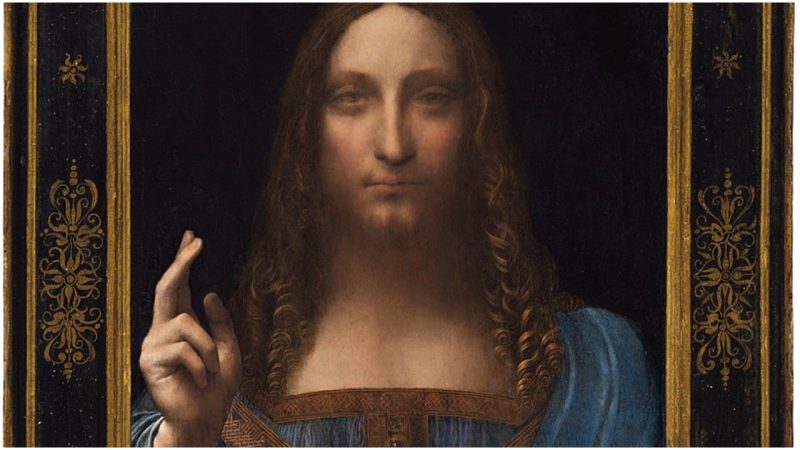A record was broken on November 15 at Christie’s in New York City when a painting by Leonardo da Vinci of Jesus Christ called Salvator Mundi sold for $450 million after a feverish 19 minutes of bidding. Da Vinci is believed to have painted less than 30 works in his lifetime, and Christie’s billed this painting as “the last da Vinci.”
There were shocked cries followed by applause after the auctioneer, Jussi Pylkkanen, announced the final bid. When, moments before, an interested party on the telephone had paused to consider how much he or she was willing to increase the amount, Pylkkanen said, “It’s an historic moment. We’ll wait.”
The money paid for Salvator Mundi, $450,312,500 to be exact, is the highest price ever paid for a work of art. The previous holder of the record price for an Old Master painting was Massacre of the Innocents by Peter Paul Rubens, which sold for $76.7 million in 2002.
The Leonardo buyer’s identity has not been revealed. The subsequent guessing game in the media ran the gamut from Amazon owner Jeff Bezos to Chinese billionaire Liu Yiqian, who paid $170 million for a Modigliani for his new museum in Shanghai.
Along with amazement over the vast amount paid there is some skepticism in the art world over the painting itself. For quite some time, it was not accepted as being a painting by Leonardo da Vinci but by someone in his workshop. In fact, Salvator Mundi sold for a mere $10,000 at an estate sale as recently as 2005. It was considered a copy of a lost Leonardo.
The painting was then extensively restored by conservator Dianne Dwyer Modestini in New York City. At a certain point respected authenticators, made aware of what was underneath, declared it actually painted by the Old Master himself. In 2011 Salvator Mundi was the star of an art show at the National Gallery in London–here was a long lost Leonardo da Vinci. The show was very popular.
The painting–last purchased by Dimitry Rybolovlev, a Russian billionaire, for $127 million–was put up for auction by Christie’s with an estimated price of $100 million, helped along with a marketing campaign many describe as “aggressive.” The auction house promoted it as “the greatest and most unexpected artistic rediscovery of the 21st century.”
The agreed-upon history of Salvator Mundi is that it was painted circa 1500, during the time that Leonardo’s patron was King Louis XII of France, a monarch who was often at war with Italy and married the beautiful 18-year-old younger sister of Henry VIII in a diplomatic alliance, dying shortly afterward in 1515. Leonardo himself died in France four years later.
The painting belonged to England’s Charles I in the 17th century but then disappeared until the 20th century. In 1958, when it was auctioned by Sotheby’s in London, it was actually attributed to Boltraffio, who worked in Leonardo’s studio.
The painting is of Jesus with long golden brown hair, dressed in blue robes, giving a benediction with his raised right hand. In his other hand, Jesus holds a clear orb of glass or crystal.
The doubters have not been whispering in corners but writing about their doubts for months. Charles Hope, of the Warburg Institute at the University of London, wrote in the New York Review of Books, “even making allowances for its extremely poor state of preservation, it is a curiously unimpressive composition and it is hard to believe that Leonardo himself was responsible for anything so dull.”
In The New York Times, critic Jason Fargo wrote that in London, he beheld “a proficient but not especially distinguished religious picture from turn-of-the-16th-century Lombardy, put through a wringer of restorations.”
Skeptics say that while the Mona Lisa has a depth of mystery in her expression that leaves any observer in awe, the eyes of Jesus in the Salvator Mundi are blank.
Nonetheless, headlines have exploded that this painting is a “male Mona Lisa.”
“This was a thumping epic triumph of branding and desire over connoiseurship and reality,” a New York art dealer told a reporter for The New York Times.
However, other art experts are certain that the painting came from the brush of Leonardo da Vinci alone. One said that there was “extraordinary consensus it is by Leonardo.”
